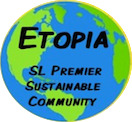I found this wonderful article in my recent newsletter from the Tacoma Food Coop. I love this place nestled in a bustling neighborhood on 6th Ave in Tacoma WA. If you’re in the area it’s well worth a stop and shop. Please note I hijacked this article and do not, yet, have permission to share it. But it was too good to pass over.
You Are What You Eat: A Forager’s Guide to Washington
Adam, TFC Produce Department
 We all know and love the convenience of supermarket produce, the comfort of being able to walk a few blocks and have an entire forest of food presented to you. Whether the food originates from a farm a day’s drive away, or a plantation way on the other hemisphere of the globe, it is brought in ripe, daily, for consumption. And don’t get me wrong, it’s a beautiful thing.
We all know and love the convenience of supermarket produce, the comfort of being able to walk a few blocks and have an entire forest of food presented to you. Whether the food originates from a farm a day’s drive away, or a plantation way on the other hemisphere of the globe, it is brought in ripe, daily, for consumption. And don’t get me wrong, it’s a beautiful thing.
But it also allows us to forget where our food comes from. Do these berries come from a tree? What does a carrot look like when it’s growing? Many of us (save the home-gardeners) may not know, as we have never had to find food ourselves, a luxury humanity has enjoyed for a relatively microscopic portion of its existence. That said, our generations are fortunate enough to live in an era where foraging still represents a viable source of food – and as Washingtonians, we have access to a virtual cornucopia of forage-able delicacies!
Fortunately, one doesn’t have to go far to practice the art of searching for wild food resources. The Washington Department of Natural Resources allows personal use harvesting of berries, mushrooms, fiddleheads, and other forest produce. Limits range from 3-5 gallons of each species per year – more than enough to freeze and supply yourself through the winter. State Parks (managed by Washington State Parks) allow non-commercial foraging, although one has to go on a case-by-case basis with the national parks (just ask a ranger if you’re unsure).
For the modern apex predator, I would recommend checking out an online app by the name of GoHunt. Created by the Washington Department of Fish and Wildlife, the app shows you an interactive map of Washington that can be filtered by type to show you areas in which you can forage. It also helps keep you off private property – definitely a hazard in some of the more open areas of the state.
 And for the city-slicking forager, there’s the Gleaning Project. This project, started in 1982, allows civilians to forage “emergency” food out of farmlands and neighborhood fruit trees alike. “Emergency” food is food that will go to waste if not picked, usually when the landowner does not have the resources to harvest it. Essentially, the project saves good food by getting it into the hands of a consumer, at the low cost of a day’s work. Donors can register their trees for gleaning, and thus give back to the community. And gleaners can get back to nature without ever having to leave the city!
And for the city-slicking forager, there’s the Gleaning Project. This project, started in 1982, allows civilians to forage “emergency” food out of farmlands and neighborhood fruit trees alike. “Emergency” food is food that will go to waste if not picked, usually when the landowner does not have the resources to harvest it. Essentially, the project saves good food by getting it into the hands of a consumer, at the low cost of a day’s work. Donors can register their trees for gleaning, and thus give back to the community. And gleaners can get back to nature without ever having to leave the city!
Hopefully this article has given you inspiration to get out and get picking – as you get closer to nature, you will get closer to yourself too. After all, we are what we eat.
